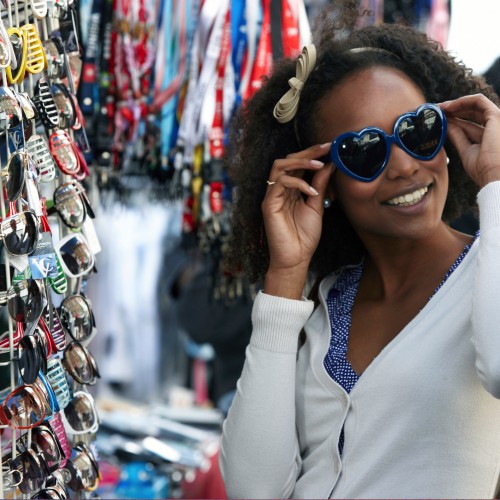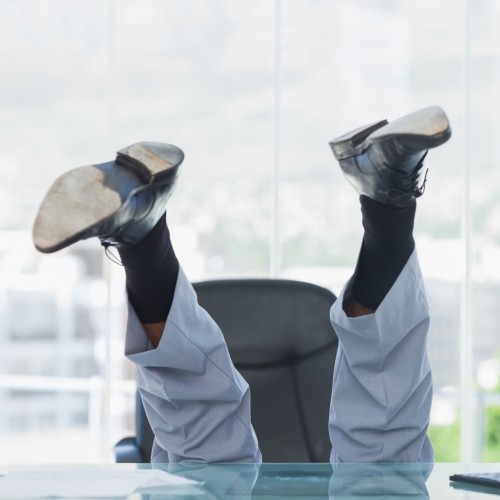
More than 24 million containers enter the U.S. each year: 11 million of them arrive by sea, another 10 million by truck, and 3 million arrive by rail. An additional quarter billion cargo, postal, and express consignment packages arrive via air. Of all products coming into the country last year, the U.S. government seized 28,865 shipments containing counterfeit products — items that infringe on U.S. trademarks and copyrights. 24/7 Wall St. reviewed the nine counterfeit products most often seized by authorities.
Based on U.S. Customs and Border Protection (CBP) seizures, the volume of counterfeit products entering the U.S. market increased by 25% from fiscal 2014 to 2015. In an interview with 24/7 Wall St., Cynthia Whittenburg, executive director of Trade Policy and Programs with the CBP, said the increase in seized counterfeits is due to both the overall rise in all shipments as well as to improved enforcement techniques.
The existence of fake items is in part the result of demand for certain products. The top four most counterfeited items, which together represent 60% of all counterfeited products, are all luxury goods. “These are items that in our society are associated with being prosperous,” Whittenburg said. Because many of these highly coveted luxury goods are also out of reach to many Americans, a market for non-genuine versions emerged.
Click here to see America’s most counterfeit items.
The distribution of these knockoff products, which are more affordable but often far lower quality or even dangerous, devalues the brands associated with the genuine items. Not only does the prevalence of counterfeit products have clear economic consequences and other harms, but also many of the dangers are unknown.
“The public may have the perception that purchasing counterfeit goods is a victimless crime,” Whittenburg added.
Counterfeit pharmaceutical and personal care items, for example, do not merely damage the bottom lines of companies in the industry. Fake medicines also pose serious risks to consumers, who may be persuaded to purchase drugs that at best do not work and at worst are harmful.
Similarly, counterfeited computer goods and electronics pose threats beyond the economic harms. According to Whittenburg, these products make up a smaller share of products seized, but the impact could ultimately be greater and more severe than it is for other fake items. This is because counterfeit computer components have been unknowingly incorporated into national defense systems in recent years, and because of their lower quality they may pose threat to national security.
Even the seemingly harmless purchase of a counterfeit bag could indirectly result in more serious consequences. Beyond the damage this does to the U.S. economy, purchasing counterfeit goods contributes to what Whittenburg described as “the downstream effect of putting funds in the hands of criminals for other nefarious activities.”
The vast majority of counterfeited items originate in Hong Kong and China. According to the U.S. government’s annual report on foreign trade, greater attention will be given to the enforcement of trade secrets in China. In recent years, players affiliated with the Chinese government have been accused of stealing data and intellectual property from U.S. companies.
To identify America’s most counterfeited items, 24/7 Wall St. reviewed fiscal 2015 data on shipments seized by U.S. Customs and Border Protection (CBP), a law enforcement organization controlled by the U.S. Department of Homeland Security. The ranking is based on the number of shipments seized — each shipment may contain any number of products. The CBP tracks seizure of products, which infringe on U.S. trademarks and copyrights or are unlawful based on exclusion orders from the United States International Trade Commission, on an annual basis. These products make up the 9 largest shares of total seizures. The manufacturer’s’ suggested retail price (MSRP) of these counterfeit products — their total value had they been sold legitimately — also came from the CBP.
9. Labels / tags
> Percent of total seizures: 2%
> Number of seizures: 550
> MSRP of seized goods: $33.3 million
Labels and tags comprise 2% of all seized counterfeited products, the ninth largest share. Counterfeit items need fake tags and labels. Considering that the CBP does not count tags on fake clothing separately from the clothes, the true level of tag counterfeiting is likely far higher. The CBP seized 550 shipments of false tags such as those sewn in fabric labels and patches, adhesive stickers and holograms, stamped metal parts such as emblems, rivets, and zippers, as well as paper hang tags often used on clothing. Fake labels and tags are made for different counterfeit products, including all types of apparel, handbags, shoes, electronics, software, and much more. Many of the products using fake tags represent some of the most falsified products on this list.
8. Computers / accessories
> Percent of total seizures: 3%
> Number of seizures: 846
> MSRP of seized goods: $38.4 million
The U.S. government seized 846 shipments of counterfeit computers and computer accessories in fiscal 2015. While this comprised just 3% of all seizures, the problem of these falsified products is perhaps greater. Most alarming perhaps is the increased targeting of military systems by counterfeiters. The potential profits from selling computer parts capable of passing as military grade are enormous, and fake computer parts have actually been found in U.S. military weapons in recent years. In 2011, Boeing and the Navy reported a faulty counterfeit ice detection system in one of its P-8 Poseidons, a long-range, anti-submarine aircraft.
As Whittenburg noted, the illegal sale of these types of imitated products poses threats not just to the American economic but to its national security.
7. Optical media
> Percent of total seizures: 5%
> Number of seizures: 1,442
> MSRP of seized goods: $32.5 million
The number of shipments of optical media products such as games, DVDs, and CDs seized by the U.S. government increased slightly last year, from 1,322 in fiscal 2014 to 1,442 in fiscal 2015. The increase in the estimated value of these items was more substantial. The MSRP of falsified optical media rose from $18.8 million in fiscal 2014 to $32.5 million last year.
In the age of the Internet, the ease of distribution and the challenge of establishing intellectual property boundaries have grown considerably. These media increasingly sold in digital form, which makes the products far more vulnerable to theft than items sold in traditional mediums.
6. Handbags / wallets
> Percent of total seizures: 7%
> Number of seizures: 2,149
> MSRP of seized goods: $208.4 million
Had they been sold on the U.S. market, the counterfeit handbags and wallets the CBP seized would have been valued at more than $200 million, comprising 15% of the total estimated value of all pirated goods. Finely made designer brands handbags can cost thousands of dollars. The market for these highly desired items with such prohibitively high prices is enormous. In July of last year, the CPB obtained 10,788 counterfeit Gucci and Coach handbags arriving from China in a single shipment. Fake handbags and wallets accounted for 7% of all counterfeit products seized by the CPB in 2015, up from 5% in fiscal 2014.
5. Pharmaceuticals / personal care
> Percent of total seizures: 8%
> Number of seizures: 2,301
> MSRP of seized goods: $75.1 million
Pharmaceuticals are one of the most counterfeited products worldwide. Since quality medicine is often in high demand yet in limited supply and also prohibitively expensive, distributing fake drugs can be very profitable for criminals. The physical harm that counterfeit medicine can cause to consumers adds another dimension to the otherwise mostly economic harms of piracy, Whittenburg explained.
The vast majority of counterfeited goods overall come from China, where a great deal of authentic products also originate. The infringement of pharmaceutical patents is among the major concerns of the United States as the two countries continue to work through trade barriers.
4. Watches / jewelry
> Percent of total seizures: 10%
> Number of seizures: 2,754
> MSRP of seized goods: $580.8 million
While counterfeit watches and jewelry seized in 2015 comprised 10% of total seizures, their estimated value of $580.8 million accounted for 43% of the value of all seized fake products — by far the largest such share of all products. Watches were among the 175,000 items seized in a single shipment last August. The products were valued at more than $100 million, an all time high. Like other luxury goods, watches and jewelry are especially vulnerable to trademark infringement. A replica can serve as a status symbol for those who cannot afford the price tag of the original luxury good.
The problem of imitation jewelry and watches is a major concern for businesses in the industry. The Federation of the Swiss Watch Industry organized in 2009 an anti-counterfeit campaign, which now holds events annually.
3. Footwear
> Percent of total seizures: 10%
> Number of seizures: 2,818
> MSRP of seized goods: $65.0 million
Of the nearly 30,000 seized shipments last year, 2,818 — or one in every 10 — were footwear products. This is approximately double the level of counterfeit footwear products seized the year before. Major shoe makers have taken steps to combat the rising prevalence of counterfeit footwear. Nike, for example, is a member of several anti-counterfeiting organizations around the world and actively supports intellectual property legislation. Over the years, the company has also added increasing numbers of hidden details to its shoes, which may be part of the company’s fight against counterfeiters as consumers can more readily identify the signature shoes.
2. Consumer electronics
> Percent of total seizures: 18%
> Number of seizures: 5,326
> MSRP of seized goods: $132.5 million
Nearly one in every five counterfeit products are consumer electronics, trailing only clothes as the second most pirated item in the United States. Had these electronics been sold on the U.S. market, they would have been valued at $132.5 million in total, the fourth highest MSRP and comprising 10% of the estimated value of all fake goods.
Many Americans want the latest electronic devices. This desire, Whittenburg noted, likely encourages the purchase and production of counterfeit electronics. Many consumers are also likely the victim of scams. According to a recent study commissioned by camera maker Canon, consumers are more likely than not to buy faked electronics without realizing it.
1. Wearing apparel / accessories
> Percent of total seizures: 22%
> Number of seizures: 6,232
> MSRP of seized goods: $157.2 million
Clothes and other apparel and accessories are again the most faked item in the United States, comprising 22% of all counterfeit products seized by authorities. Expensive designer clothing is associated with prosperity and is highly coveted as a result. It is also largely unaffordable to most Americans. The desire for products that are out of reach for the average pocket is a perfect recipe for a thriving counterfeit market.
More than 80% of fake clothing products come from China, largely due to the sheer volume of trade coming from the country. According to a recent investigation by Buzzfeed News, numerous clothing stores have been accused of baiting Facebook users with photos of high-end clothing and selling them imitations. The investigation found that at least eight of these clothing dealers have been linked with ShenZhen Global Egrow E-Commerce Co., a publicly traded Chinese company.
Cash Back Credit Cards Have Never Been This Good
Credit card companies are at war, handing out free rewards and benefits to win the best customers. A good cash back card can be worth thousands of dollars a year in free money, not to mention other perks like travel, insurance, and access to fancy lounges. See our top picks for the best credit cards today. You won’t want to miss some of these offers.
Flywheel Publishing has partnered with CardRatings for our coverage of credit card products. Flywheel Publishing and CardRatings may receive a commission from card issuers.
Thank you for reading! Have some feedback for us?
Contact the 24/7 Wall St. editorial team.
 24/7 Wall St.
24/7 Wall St. 24/7 Wall St.
24/7 Wall St.


